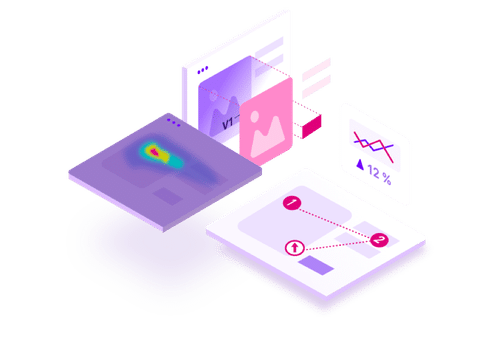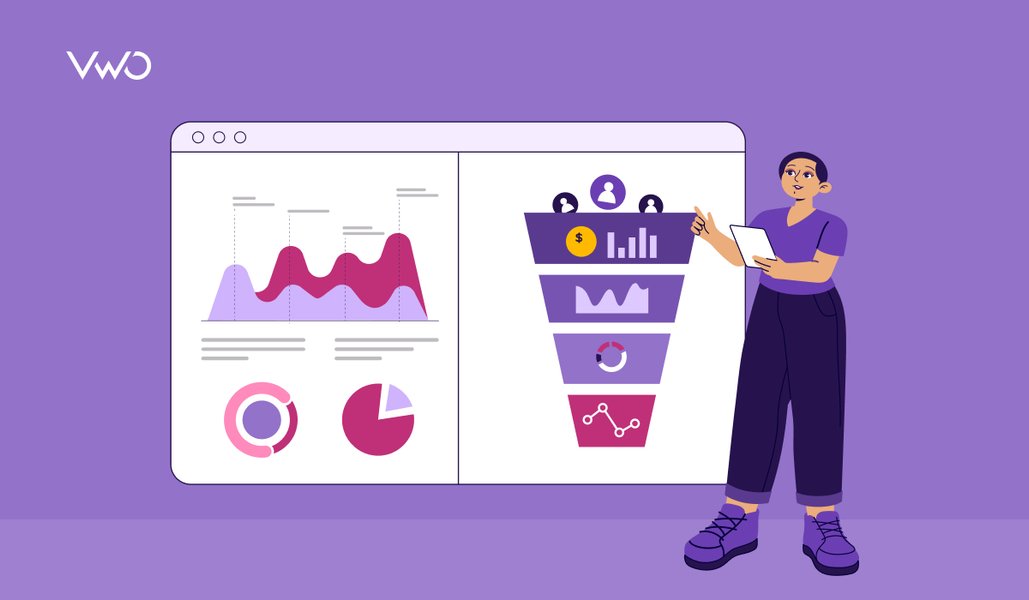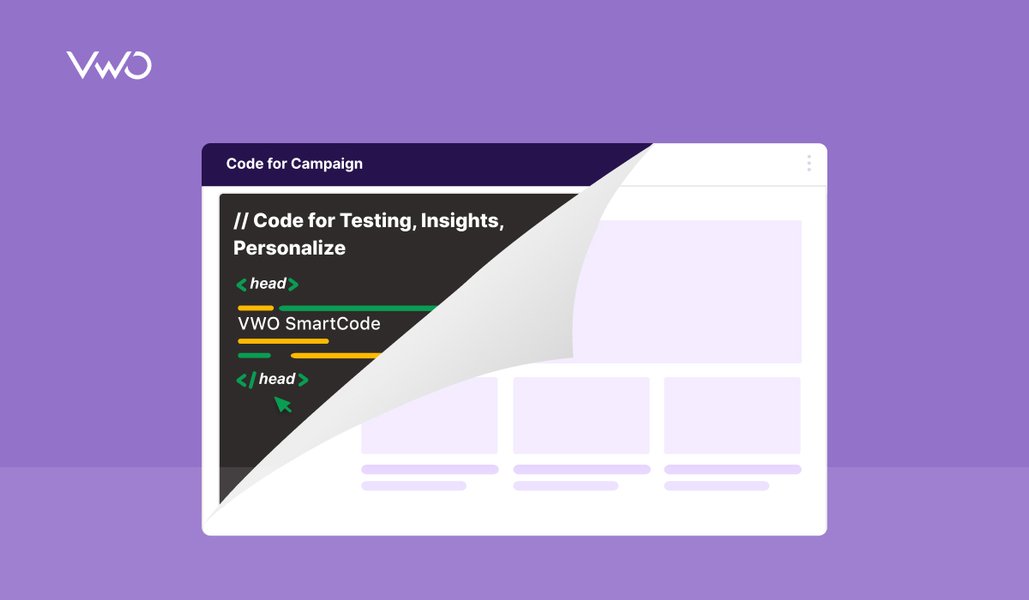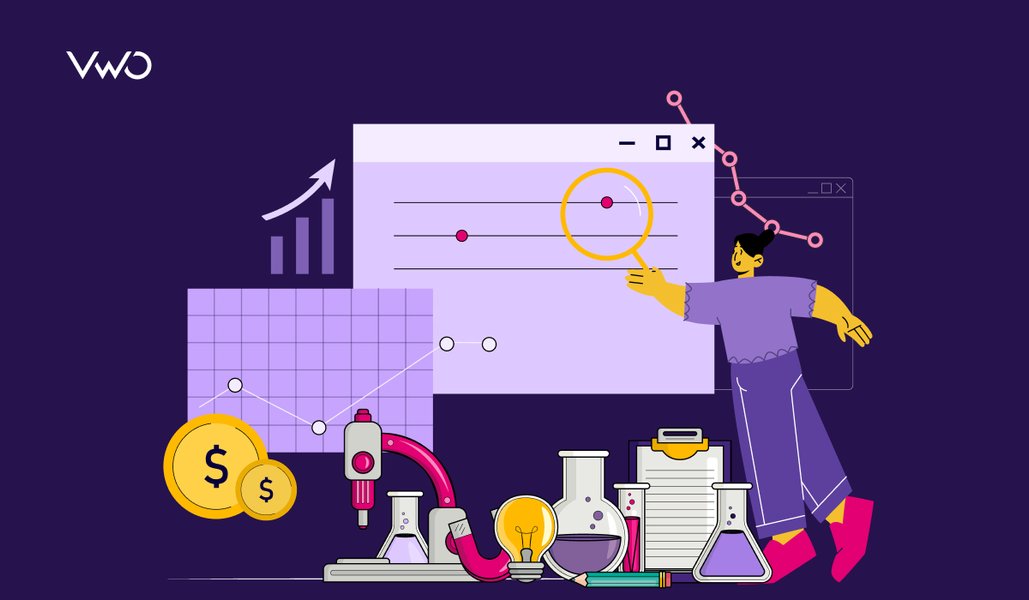The Ultimate Guide to Experimentation Platform for Growth
In a world where attention spans shrink and competition multiplies, the brands that win aren’t the ones with the boldest ideas; they’re the ones who test, learn, and evolve faster than the rest. Behind that agility is a quiet engine of innovation: the experimentation platform.
From subtle design tweaks to full-feature rollouts, experimentation platforms help teams stop guessing and start knowing by turning user behavior into measurable outcomes. They’re not just tools; they’re growth accelerators, risk reducers, and decision enablers wrapped into one.
This guide unpacks everything you need to know about the experimentation process, what they are, how they work, and why they’ve become essential for teams aiming to grow smarter, not just bigger.

What is an experimentation platform?
An experimentation platform is a system that enables businesses to test different versions of their products, services, or experiences, such as website layouts, pricing models, or marketing messages, by showing variations to users at random and tracking their behavior.
These platforms track user behavior and analyze interaction data to determine which version performs better. This process empowers data-driven decision-making, enabling teams to validate ideas against key business metrics, reduce the risk of missteps, and continuously improve both user experience and performance outcomes.
Benefits of experimentation platforms
Experimentation platforms do more than run A/B tests; they enable teams to minimize risk, validate ideas faster, and unlock sustainable growth. By integrating experimentation into product and customer journeys, businesses make smarter decisions based on real user behavior.
Here’s how leading organizations leverage these platforms to drive continuous improvement:
1. Feature validation before full rollout
One of the most powerful uses of experimentation platforms is the ability to test new features with a subset of users before releasing them broadly. By using feature flags and control groups, and ensuring proper data pipelines, teams can assess whether the new feature enhances engagement, usability, or retention without impacting the entire user base.
Example: A fintech app can test a new payment flow with 10% of users to monitor drop-off rates and success metrics before a global launch.
2. Optimizing conversion funnels
Conversion rate optimization (CRO) is a common use case where platforms allow marketing and product teams to test headlines, CTAs, page layouts, form fields, and more. By running statistically significant tests that focus on variance reduction, businesses can identify which variation drives higher conversions, whether it’s signup, purchase, or download.
Example: An eCommerce platform can experiment with different product page designs to increase add-to-cart and checkout rates.
3. Improving user experience and engagement
Subtle UI/UX tweaks can have significant effects on user behavior. Experimentation platforms help teams fine-tune navigation menus, onboarding flows, and notification timing, which can otherwise be time-consuming, based on how users interact with the product.
Example: A media streaming platform can test different recommendation algorithms or homepage layouts to see which one keeps users watching longer.
4. Personalizing experiences at scale
By segmenting users based on behavior, location, device type, or previous interactions, experimentation platforms enable hyper-personalized experiences. Teams can run targeted experiments for specific cohorts, ensuring content and features resonate more deeply with different audience groups.
Example: A travel booking app may test personalized hotel offers for repeat users in specific cities to increase repeat bookings.
5. Maximizing revenue
Experimentation platforms help optimize pricing, subscription tiers, and promotions to drive revenue with confidence. Instead of relying on assumptions, businesses can test variations, like discount levels, bundles, or billing cycles, and measure their impact on conversions, retention, and customer value.
Example: A SaaS company might test whether offering a quarterly billing cycle alongside monthly and annual plans improves conversions, or whether bundling premium features increases upsell rates.
These controlled experiments help identify what users are willing to pay for and which offers resonate best, allowing revenue teams to make informed, profitable decisions with minimal risk.
6. Enhancing product-market fit
Early-stage startups can use experimentation to identify what resonates most with users and pivot quickly. From feature prioritization to onboarding copy, experimentation enables faster iterations and better alignment with market needs.
Example: A new health app may test multiple value propositions (weight loss, fitness, sleep tracking) to identify which messaging gains the most traction.
7. Minimizing the risk of failures
Experimentation platforms help reduce the risk of costly product or feature failures. With structured experiment design, controlled rollouts, and real-time monitoring, teams can safely test even large-scale changes. Guardrail metrics, such as error rates, crash logs, or churn indicators, act as early warning signals, while built-in alerting and performance dashboards enable teams to make quick, informed rollback decisions if something goes wrong.
Example: A B2B SaaS platform may test a backend architecture change with just 5% of users, using real-time monitoring to track error rates, latency, and crash reports. If issues arise, the platform enables an immediate rollback before the change reaches the wider user base.
8. Driving a culture of data-driven innovation
Perhaps most importantly, experimentation platforms foster a mindset of curiosity and evidence-based decision-making across teams. Instead of relying on HiPPOs (highest paid person’s opinion), product and marketing ideas are validated through experimentation, creating a shared language of data, confidence intervals, and learning.
Example: A company with a mature experimentation culture might run hundreds of tests a month, creating a continuous loop of insights and improvement across departments.
How experimentation platforms work
Experimentation platforms provide a structured framework to test ideas, measure impact, and make informed decisions. By following a disciplined approach, teams can reduce guesswork, uncover insights, and continuously improve product and marketing performance.
Here’s how the experimentation process typically unfolds:
1. Set clear objectives
Start by defining what the experiment is meant to achieve, whether it’s boosting conversions, reducing churn, or validating a new product feature. A clear objective keeps the team aligned and ensures measurable outcomes, anchoring the experiment in real business value.
2. Form a hypothesis
Build a testable statement based on user insights, analytics, or product intuition, something you believe will improve the chosen metric. For example, “Shortening the signup form will increase completion rates.” A focused hypothesis gives your experiment direction and helps interpret outcomes with clarity.
3. Design the experiment
Decide what you’ll test, how many versions (control and variants) will be included, who will see them, and how long the test will run. Outline key success metrics and guardrails to monitor unintended side effects. A well-structured design ensures that results are trustworthy and the user experience remains intact.
4. Randomize and launch
Users are randomly divided into test groups so each variant is seen by a statistically similar audience. Platforms ensure consistent delivery across devices and touchpoints. Randomization is crucial because it eliminates bias, making performance comparisons fair and credible.
5. Track and collect data
Once the experiment is live, the platform captures real-time data, clicks, scrolls, form completions, conversions, revenue, and more. Some also support error tracking and backend metrics. This data provides a complete picture of user behavior and reveals the real-world impact of each change.
6. Analyze performance
After enough data is collected, the platform runs a statistical analysis to determine if one variant significantly outperformed the others. Confidence scores, p-values, and dashboards help teams validate results. This ensures that decisions are backed by statistical certainty rather than assumptions.
7. Decide and deploy
With results in hand, teams can confidently roll out the winning version, make further refinements, or revert to changes that underperformed. Documenting insights also helps refine future tests. This decision phase ensures that every product or marketing change is grounded in evidence, not opinion.
8. Repeat and optimize
Experimentation is an ongoing loop; each test uncovers new insights, refines strategies, and builds momentum for continuous improvement. By embedding this cycle into your workflow, your team drives faster innovation and sustainable, long-term growth.
Types of experimentation platforms
Experimentation tools can be broadly classified based on how and where they operate, ranging from front-end testing tools to full-lifecycle solutions. Each type caters to different teams, workflows, and technical needs.
1. Web & UI experimentation platforms
These platforms focus on optimizing website experiences through A/B or multivariate tests using visual editors and no-code tools. They may include heatmaps, session recordings, or funnel analysis to assist in hypothesis formation.
Use case: Ideal for marketers and designers running tests on page elements like headlines, CTAs, and forms.
2. Full‑stack & feature flag platforms
These developer-centric platforms enable server-side testing and controlled feature rollouts using code-based implementations.
Use case: Suitable for testing backend changes, algorithms, and gradually releasing new features without user disruption.
3. Product-led growth experimentation platforms
Focused on improving user engagement and adoption, these platforms integrate in-app nudges, behavioral tracking, and analytics. These platforms are often built to work in-product (mobile/web apps), sometimes overlapping with analytics or engagement tools.
Use case: Best for product teams optimizing onboarding flows, feature usage, and retention.
4. Marketing experimentation platforms
These tools help optimize marketing campaigns across email, push, SMS, and more, often as part of broader automation suites.
Use case: Useful for testing message variants, audience segmentation, and campaign effectiveness.
5. All-in-one / Full-lifecycle experimentation platforms
These comprehensive platforms combine client-side, server-side, feature management, and analytics into a unified workflow. They support unified management, cross-team collaboration, and faster insight-to-deployment cycles.
Use case: Ideal for organizations seeking end-to-end control, from idea to test to rollout, across multiple teams.
6. Custom in-house experimentation platforms
Large enterprises often build their platforms to meet scale, control, and integration requirements.
Use case: Designed for complex, high-volume testing across business units with proprietary infrastructure.
Top experimentation platforms
1. VWO: All-in-one experimentation platform

VWO is a unified experimentation platform that combines web testing, feature management, behavioral insights, and personalization, offering a complete solution for optimizing digital experiences.
Built for both marketers and product teams, VWO supports end-to-end testing across client-side and server-side environments, using A/B, multivariate, and multi-armed bandit methods.
For marketers, VWO’s Visual Editor and prebuilt element library make it easy to launch and test content, layout, and messaging changes without writing code. Advanced targeting and segmentation ensure campaigns reach the right users at the right time.
For product and engineering teams, the VWO Feature Management and Experimentation (FME) suite allows for safe, controlled rollouts using feature flags, with support for guarded deployments, automatic rollbacks, and impact analysis. Experiments can be integrated into development workflows to support fast, reliable innovation.
Know how Human Interest boosted conversions by 75.84% using VWO FullStack’s server-side testing and Contentful integration, reducing engineering reliance and accelerating test velocity.
AI-powered tools like VWO Copilot streamline hypothesis creation, segmentation, and variation building, allowing experimentation at scale. Coupled with detailed reporting, integration with analytics and CDPs, and user behavior analysis through heatmaps, session replays, etc. VWO offers a powerful, all-in-one platform for continuous product and experience optimization.
Leverage VWO Copilot to automatically scan heatmaps and session recordings to uncover user friction points and overlooked audience behaviors. It then suggests specific test ideas, like changing button placement or simplifying forms, and helps you turn those insights into live experiments.
Features
A/B Testing, Multivariate Testing, Split URL Testing, Segmentation, Targeting, Reports & filters, Behavior analytics, VWO Copilot AI, Visual & Code Editor
Pricing
- Free trial: Available for 30 days. Take the free trial today.
- Free: Starter plan with basic experimentation and reporting features.
- Paid: Starts at $220/month, billed annually
Pros:
- The platform is flexible and allows customization based on specific client needs.
- Easy integration with other tools and clear result visualization make it simple to share insights from experiments.
Cons:
- Full-stack testing features may require additional developer involvement during setup and integration.
2. AB Tasty: Web experimentation platform

AB Tasty is an experience optimization platform that helps businesses turn user insights into high-impact digital experiences through web and feature experimentation. It supports A/B, multivariate, split, and multi-page testing across web, mobile, and connected devices, enabling faster validation and confident scaling.
Its no-code Visual Editor allows for quick experiment deployment, while Dynamic Allocation uses AI to automatically send traffic to top-performing variations for better outcomes.
As an all-in-one solution, AB Tasty helps brands boost conversions, personalize journeys, and reduce risk, accelerating CRO programs with speed and precision.
Features
A/B Testing, Predictive Testing, Stat Engine, Multivariate Testing, EmotionsAI, Audience Segmentation, Custom Widgets, Pre-Built AI Segments, Audience Builder, Visual Editor, Feature Flags, User Segmentation & Targeting
Pricing
- The info is not available on the website.
Pros:
- The platform is intuitive and easy to navigate, making it user-friendly for all team members.
- Test results are easy to analyze, with helpful filters to refine reports and uncover deeper insights.
Cons:
- Occasional bugs in the editor or QA process can slow down test implementation.
- After setup, viewing and validating tests across different devices can sometimes be a bit tricky.
3. LaunchDarkly: Full stack & feature flag platform

LaunchDarkly is an end-to-end features management and experimentation platform that helps software and AI teams manage the full lifecycle of feature delivery with speed, safety, and control. By using feature flags, it separates deployments from releases, enabling faster iteration, reduced risk, and sustained development velocity.
As an experimentation platform, it unifies feature delivery with real-time testing and performance analysis, helping teams make data-driven decisions about which variations to ship. Key capabilities like Guarded Releases support progressive rollouts and instant rollbacks, while AI Configurations let teams test and refine models live, without redeploying.
Features
Full Stack Experimentation, A/B/n Testing, Funnel Optimization Experiments, Advanced Audience Targeting, Experiment Builder, Segments, Multivariate Flags, Custom Flags, Workflow Collaboration, Product Analytics
Pricing
- Free trial: The developer account includes 14 days of unlimited access to all the capabilities.
- Free: Feature flagging and experimentation for developers with limited capabilities.
- Paid: Starts from $10/service connection/month, billed annually.
Pros:
- The platform has an intuitive and user-friendly interface, making it easy even for first-time users.
- It allows full control over features even after release, making it easy to manage rollouts.
Cons:
- A quicker, one-click rollback option after approval would make the release process even smoother.
- The platform currently lacks a native option to preview control and treatment groups before launch, which can make final QA more challenging.
4. Amplitude: Product-led growth experimentation platform

Amplitude is a product-led platform that brings A/B testing and feature rollouts into Amplitude’s analytics ecosystem. With cohort-based targeting, identity resolution, and consistent metrics, teams can test features, optimize user flows, and make faster, data-driven decisions without complex integrations or extra engineering effort.
Its self-serve Web Experimentation enables quick, scalable testing across websites, while the intuitive interface and guided workflows make it easy for product managers, analysts, and engineers to collaborate and iterate with confidence.
Features
Web Experimentation, Web Analytics, Product Analytics, Session Replay, Surveys, Feature Management, Feature Tagging, Segmentation, Behavioral Cohorts, Feature Flags, Activation, AI-powered analysis, A/B/n Testing
Pricing
- Free: Starter plan includes tracking up to 50k MTUs per month.
- Paid: Starts at $49/month, billed annually.
Pros:
- Once the initial setup is done, web experiments can be launched without needing new deployments each time.
- The editing interface is intuitive, enabling non-technical team members to run experiments easily and speeding up the overall testing process.
Cons:
- The statistical significance thresholds can sometimes feel inconsistent with the volume of data required to validate an experiment.
- Adding metrics or updating results in Amplitude Experiment may feel a bit slow at times.
5. Braze: Marketing experimentation platform

Braze is a customer engagement platform that helps marketers deliver personalized, real-time experiences across channels like email, push, and in-app messaging, all from one integrated platform. It unifies data collection, audience segmentation, messaging, and journey orchestration to support meaningful and scalable customer interactions.
Braze offers AI-powered experimentation and optimization, allowing teams to test content, timing, channel mix, and entire journeys without engineering support. With BrazeAI™, the platform identifies winning variants and automatically routes users to the most effective paths. Real-time feedback and personalized journey variants ensure campaigns adapt continuously to maximize engagement and performance.
Features
A/B Testing, Personalization, Segmentation, Campaign Analysis, Reporting & Analytics, AI Automation, Journey Orchestration, BrazeAI
Pricing
- Info on plans is not available on the website.
Pros:
- Braze is easy to plug into your tech stack, and the user-friendly interface makes it quick to learn, even for new users.
- It makes creating multi-channel campaigns and lifecycle journeys simple, helping teams target users at every stage.
Cons:
- Support response times can occasionally be slower than expected.
- At times, the platform can be a bit slow to load, which affects overall efficiency.
6. Netflix’s experimentation platform: Custom in-house experimentation platform

The Netflix Experimentation Platform is a company-wide framework that powers data-driven decision-making through large-scale A/B testing and causal inference. Nearly every product change, whether it’s a new recommendation algorithm, UI update, or payment method, is tested through controlled experiments to ensure a measurable impact on the member experience.
When A/B testing isn’t feasible, Netflix uses quasi-experiments and causal inference to guide decisions. Backed by active research and strong executive involvement, the platform supports a culture of rigorous analysis, open debate, and continuous optimization, making experimentation central to Netflix’s innovation strategy.
Summary: Top experimentation platforms
| Platform | Features | Pricing |
| VWO | A/B Testing, Multivariate Testing, Split URL Testing, Segmentation, Targeting, Reports & filters, Behavior analytics, VWO Copilot AI, Visual & Code Editor | Free trial: Available for 30 days. Free: Starter plan with basic experimentation and reporting features. Paid: Starts at $220/month, billed annually |
| AB Tasty | A/B Testing, Predictive Testing, Stat Engine, Multivariate Testing, EmotionsAI, Audience Segmentation, Custom Widgets, Pre-Built AI Segments, Audience Builder, Visual Editor, Feature Flags, User Segmentation & Targeting | The info is not available on the website. |
| LaunchDarkly | Full Stack Experimentation, A/B/n Testing, Funnel Optimization Experiments, Advanced Audience Targeting, Experiment Builder, Segments, Multivariate Flags, Custom Flags, Workflow Collaboration, Product Analytics | Free trial: The developer account includes 14 days of unlimited access to all the capabilities. Free: Feature flagging and experimentation for developers with limited capabilities. Paid: Starts from $10/service connection/month, billed annually. |
| Amplitude | Web Experimentation, Web Analytics, Product Analytics, Session Replay, Surveys, Feature Management, Feature Tagging, Segmentation, Behavioral Cohorts, Feature Flags, Activation, AI-powered analysis, A/B/n Testing | Free: Starter plan includes tracking up to 50k MTUs per month. Paid: Starts at $49/month, billed annually. |
| Braze | A/B Testing, Personalization, Segmentation, Campaign Analysis, Reporting & Analytics, AI Automation, Journey Orchestration, BrazeAI | Info on plans is not available on the website. |
Frequently asked questions (FAQs)
An experimental platform allows businesses to test different versions of a product or experience with real users, analyze results, and make data-driven decisions to improve outcomes.
The 4 steps are:
– Define a hypothesis: Identify what you want to test and why.
– Design the experiment: Create variations and decide on metrics.
– Run the test: Randomly assign users and collect data.
– Analyze results: Compare performance and draw conclusions.
Refer to the experimentation checklist to avoid setup issues and ensure reliable results.
Experimentation in software involves testing changes, like new features or UI updates, on a subset of users to assess impact before a full rollout, helping teams build better products with less risk.
Experimentation is used to validate ideas, optimize user experience, personalize content, reduce rollout risk, and improve key metrics such as engagement, conversion, and retention.























